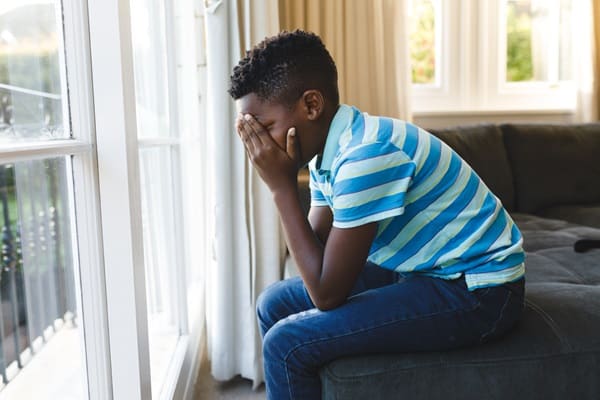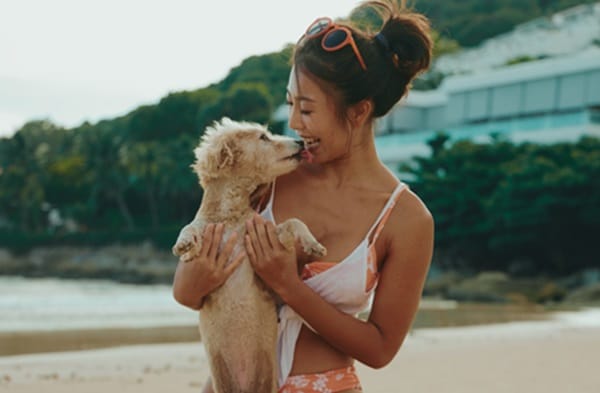Losing a pet is a deeply personal and painful experience. Many people underestimate the bond formed between humans and their animal companions. This connection, rich in unconditional love and loyalty, often makes the departure of a pet devastating. During these moments of loss, individuals face a range of emotions, questioning how to navigate through the sorrow. This post aims to be a gentle guide, offering insights and coping strategies to process grief, find support, and emerge into healing with grace and respect for the beloved pets who once filled lives with joy.
Understanding Pet Loss Grief

Pet owners often consider their animal companions as family members. The loss triggers emotions similar to those experienced when a human loved one passes away. These feelings can be overwhelming, encapsulating sadness, anger, confusion, or even guilt. Recognizing and accepting these emotions is the initial step toward healing. Every individual’s grieving process is unique, adorned with its distinct pace and intensity. Embracing this diversity in emotional responses is crucial for personal healing and supporting others experiencing a similar loss.
This journey of navigating emotions is often lined with the stages of grief, including denial, anger, bargaining, depression, and acceptance. It’s essential to remember that these stages are not linear; individuals might oscillate between them, experiencing each stage multiple times or in different orders. Understanding this complexity paves the way for patience and kindness towards oneself, fostering an environment conducive for healing. Accepting the tumultuous nature of grief can diminish the intensity of its impact over time.
Emotional Healing

One healing practice involves expressing emotions rather than suppressing them. Journaling can be a powerful tool, providing a private space to unravel tangled feelings, memories, and thoughts. By putting pen to paper, individuals articulate their grief, granting clarity and perspective. The physical act of writing can also serve as a release, a tangible means to let go of pent-up emotions, forging a path to healing.
Another coping strategies lies in commemorating the departed pet. Crafting a memorial or writing a farewell letter can facilitate the expression of love and loss. This act of remembrance honors the pet’s life and the joy brought into the home. By celebrating these cherished memories, individuals can embark upon the journey of transforming their grief into a testament of love, encapsulating the bond shared with their animal companions in moments of remembrance.
Seeking Social Support

In times of loss, connecting with others can offer solace and understanding that alleviates the burden of grief. Sharing feelings and experiences with friends or family members provides a sense of belonging and acceptance. For many, vocalizing their grief aids in processing their emotions, converting the internal tumult into shared narratives of loss and love. This communal space becomes a sanctuary where memories are shared, and feelings are validated, ushering healing through unity.
Alternatively, joining support groups or forums dedicated to pet loss can be particularly beneficial. These platforms provide a space to connect with individuals undergoing similar experiences. The shared narratives and coping strategies often offer insights and comfort that are both cathartic and illuminating. In these communities, every story, every tear, and every memory finds its echo, weaving a tapestry of shared healing where the grief, though individual, is faced collectively.
Children And Pet Loss

Children can be profoundly affected by the loss of a pet, experiencing a range of emotions from confusion to deep sadness. It is vital for guardians to be attentive and supportive during this period. Children might struggle to articulate their feelings, and their expressions of grief can manifest through behavioral changes or questions about life and death. Addressing these queries with honesty and compassion fosters a safe space for them to process their emotions.
Encouraging creative expressions of grief can also be significantly beneficial coping strategies for children. Drawing, painting, or crafting memorials allows them to externalize and articulate their feelings in a tangible form. Such activities not only aid in processing emotions but also help in celebrating the life of the lost pet. It instills a sense of continuity, where the pet, though physically absent, continues to live in memories and shared stories of joy.
The Role Of Remaining Pets

It’s not uncommon for remaining pets to exhibit behavioral changes following the loss of their companion. They might show signs of anxiety, depression, or even physical ailments. Attentive observation of these changes is essential to provide the necessary care and support. Adjustments to their routine, additional affection, and engagement can mitigate their stress and anxiety.
At times, allowing the remaining pets to witness the departure or absence of their companion can be crucial in their coping strategies. They reach an understanding, often leading to quicker adaptation to the absence. In cases of lingering distress, seeking advice from a veterinarian can offer tailored strategies to assist in their adjustment, ensuring that their physical and emotional needs are met in the wake of loss.
When To Seek Professional Help

There are instances where the grief of losing a pet can transform into complicated grief, marked by an intense and enduring sorrow. Individuals may experience invasive thoughts, extreme focus on the loss, or an avoidance of reminders of their pets. When these symptoms persist, seeking professional help becomes an essential step to navigate through this overwhelming grief. Therapists and counselors specialized in pet loss can provide tools and strategies tailored to individual needs, facilitating a path towards healing.
The search for a therapist can focus on professionals who comprehend the depth of the bond between pets and their owners. These experts can guide individuals through their unique grieving process, offering insights and coping mechanisms rooted in understanding and empathy. The journey with a counselor not only aids in processing the loss but also in honoring the profound connection shared with the departed pet, turning pain into a celebration of a life that, though no longer present, continues to hold significance.
Moving Forward

Healing from pet loss is a gradual journey, punctuated by moments of reflection, sadness, and reminiscence. It is a unique process where the intensity of grief ebbs and flows, eventually leading to acceptance. Taking care of one’s mental and physical well-being during this time is paramount. Engaging in activities that promote relaxation, solace, and reflection can create a sanctuary where memories flourish, and healing roots itself firmly.
Considering the adoption of a new pet is a significant step that arises amidst or after the grieving process. It’s essential to understand that this isn’t a replacement but an expansion of the heart’s capacity to love and nurture. Every pet brings a unique presence, and welcoming another animal companion is an individual decision embedded in readiness and willingness to embark on a new journey of companionship.
The Bottom Line
Navigating through the loss of a pet is a journey marked by waves of grief, reflection, coping strategies, and eventual healing. Every individual’s path is distinct, engraved with personalized expressions of pain and remembrance. In this ordeal, seeking support, expressing emotions, and honoring the memory of the lost companion are pivotal steps. They intertwine to form a pathway where grief is not a terminus but a passage leading to a destination where memories are held with fondness, and the absence, though painful, becomes a testament to a bond that death can’t sever.